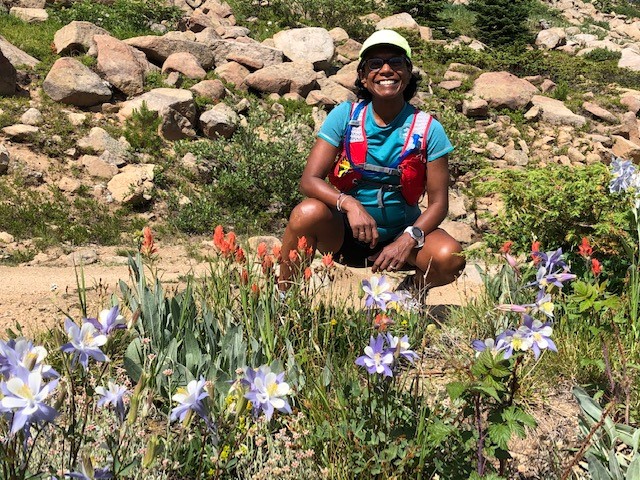Blog #254
At 8:13 p.m. in the high country of Leadville, Colorado, Reka completed a massive 50-mile trail run. This run had taken over 15 hours, 109,000 steps, and thousands of vertical feet gained and lost – all above an altitude of 10,000 feet. It was stunning to watch, support, collaborate, and encourage her.
This achievement did not happen overnight. In fact, it was the culmination of ideas planted long ago, intentional coaching, rigorous training, a clear goal, amazing team support, and a singular focus that did not allow her to quit.
Recently, I wrote a blog about my own experience regarding endurance training and forgot to mention an important piece: I think the reason I worked so hard was because it made me a better person. I strongly believe this to be the case. However, a friend challenged me by stating I was not clear on exactly how it made me better. I thought about this while I was pacing Reka on my bike.
I concluded that much of the process involving my pursuit of endurance events is similar to what many senior business leaders and owners face. I am not suggesting the physical aspects of the process are the same, but virtually every one of the mental aspects is similar. For both senior leaders and endurance athletes (even novice athletes like myself), a goal must be set. I needed some assistance. A nudge from our great friends, Doug and Laurie, our weekend hosts, planted the initial seeds on what might even be possible. They encouraged me to adjust my vision, dream bigger, and look higher, which helped me to set even higher goals.
As with business, my next step was to recruit someone who could build a plan, advise, and coach me. Preferably, this individual would be an outsider and someone who had coached others to achieve their goals in an intentional and methodical way. Our coach, Amanda McIntosh, was that person. She is a two-time women’s winner of the Leadville 100-mile foot race, former world champion, and general badass.
In addition to Amanda’s guidance, I needed advice on nutrition, my thinking (thanks, Coach Dar!), and acquiring the right equipment. In each case, I went for the best, which has paid amazing dividends.
My next step was to trust my team and work my plan. I had to show up every day and not cut corners, stay in the saddle, and keep pedaling, regardless if it was 15 or 100 degrees outside. I had to execute. Just as in business, once you have the plan, it is critical to work it, stay consistent, execute, pivot, and continue moving forward.
Initially, I thought this was all there really was to it…but after pacing with Reka for many hours, I realized there are a couple more similarities between endurance training and business, which I think are critical, yet often ignored.
First, let people on the team help. It was Reka’s race, but her success was realized by the team of five who supported her on that day. We are fortunate to have the backing of these wonderful people; their guidance is a major factor in what we are both achieving. Our friends and coaches are experienced athletes, medical folks, and are truly compassionate about helping us achieve our goals. They are experts at what they do. For Reka and I (as well as many senior leaders), it may be difficult to let people assist at times; however, trusting in others is how we can maximize what we are capable of.
Lastly, there is a shared mentality between some athletes and senior leaders that they alone are accountable for making the hard decisions. For senior leaders, this may look like choosing a path they know will involve pain, but that they believe is the right one to take in the long run. I have seen this pattern repeatedly play out during the challenges presented by COVID-19. These decisions are often tough and rarely is the outcome guaranteed. The senior leader must consider all the options, trust the work that has been done and team that is involved, then make the call. In some cases, this may risk failure. It will involve uncertainty, unknown challenges, and likely discomfort. Senior leaders and athletes know that the only way to achieve something great is to set a goal, create a team, build a plan, execute it, and strive to achieve something unreasonable.
It was this last point – making a hard decision – that happened in real time during this race. There was a point on the course, about 32 miles in, where Reka was faced with the worst uphill segment of the entire run. I estimated it to be about two miles long and well over 1,000 vertical feet. I had been with her for much of the previous eight hours and knew she was still fighting acclimatization and stomach issues. She was hurting and second guessing herself. Doug had graciously offered to pace Reka on this section, and he was waiting with a smile and tons of energy at the base of the climb. Seeing Doug, remembering all the work, and trusting she could do it, Reka dug deep and made the hard decision to keep going. She was aware that this would likely cause major discomfort and would push her more than she had ever been pushed. She may even fail. That one hard decision was the culmination of many other decisions.
In that moment, I realized she would complete the course. And she did.
The lessons Reka learned from this experience have empowered her to improve. So much so, that she is already planning on doing the course again next year.
Now, when people ask me why I do endurance events, I am clearer in my understanding of why. There is so much I learn about myself when I participate in these events. I believe the more I push myself, the more I begin to trust others, which creates a willingness to make the hard decisions. As a result, I expand what is possible. And I believe this makes me a better person.
As senior leaders, you do this every day. Going forward, I encourage you to keep striving and be unreasonable. You never know what is possible!
As a leader, are you trusting your team? Are you interested in learning how to make those hard decisions? We can help! Reach out to us today to find out how.
Keep Smiling,
Kris



